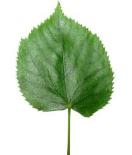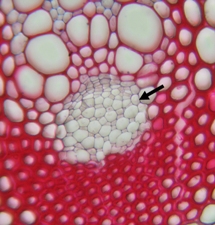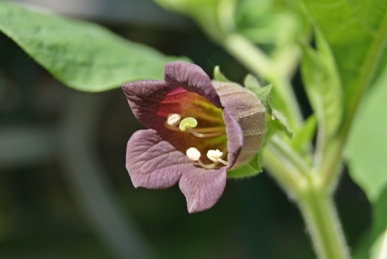Adaptation
When plants moved from water to land, they faced a few problems: increased exposure to the harsh sunlight put them at risk for drying out, there were fewer available nutrients, and their structures did not offer the proper support for living out of the water. The plants responded to these problems by adapting different structures to increase their fitness for the different environments.
To protect themselves from drying out, plants evolved a waxy
covering called a cuticle, and also developed stomata.
The cuticle
prevents excess water from entering or exiting, as well as other
molecules or potentially harmful particles.
The stomata are openings
in the tissue of the plant that allow water in or out. They are
surrounded on either side by guard cells, which control whether or
not the stoma is closed or open, depending on the environmental
conditions.
© Krzysztof P. Jasiutwicz
 2004
2004
Another adaptation plants have developed is broad leaves, to enhance the surface area available for photosynthesis to take place. These leaves also react to the presence of light by turning towards it, which also enhances photosynthesis. A plant hormone called auxin is responsible for this occurrence.
As they became more and more evolved, plants developed more adaptations to living on land. Between the true mosses (or Bryophyta) and the Lycophytes (club mosses), plants evolved vascular tissues (xylem and phloem) to help support larger sizes of plants.
Between the Pterophytes (ferns, horsetails, and whisk ferns) and the Gymnosperms, seeds replaced spores as the main means of reproduction. Plants also developed pollen, meaning that plants no longer had to depend on water to transport their spores.
Another adaptation that differentiates the Angiosperms from the Gymnosperms is the presence of flowers. Flowers hold all the reproductive structures of the Angiosperms, and serve as a protective barrier for the organs, as well as serving as a means of attracting insects and other animals that can spread the pollen of the plants for reproduction.
Many Angiosperms also have fruit that are formed by the pollination of the plant's flowers. The pollen is deposited either by the wind or by other organisms near the pistil of the plant. The pollen then makes its way through a pollen tube to the ovule, where fertilization occurs, and a seed is formed. The ovule becomes the seed, and the surrounding ovary becomes the fleshy part of the fruit that protects the seed.
Yet another characteristic only found in the Angiosperms is double fertilization. To read more about this, go to the Reproduction page.
For protection from potential predators, Deadly Nightshade developed a toxin to poison any organisms that tried to eat it. For more information on how this poison works, check out the Interactions page.
Click here to go on to
Nutrition,
or here to go back to the Home page.


